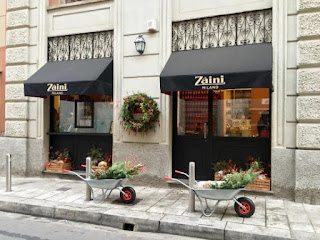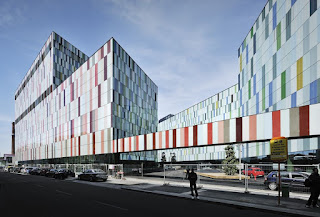Alfredo Casella – composer
Musician credited with reviving popularity of Vivaldi
Pianist and conductor Alfredo Casella, a prolific composer of early 20th century neoclassical music, was born on this day in 1883 in Turin. Casella is credited as being the person responsible for the resurrection of Antonio Vivaldi’s work, following a 'Vivaldi Week' that he organised in 1939. Casella was born into a musical family. His grandfather had been first cello in the San Carlo Theatre in Lisbon and he later became a soloist at the Royal Chapel in Turin. His father, Carlo, and his brothers, Cesare and Gioacchino, were professional cellists. His mother, Maria, was a pianist and she gave the young Alfredo his first piano lessons. Their home was in Via Cavour, where it is marked with a plaque. Casella entered the Conservatoire de Paris in 1896 to study piano under Louis Diemer and to study composition under Gabriel Fauré. Ravel was one of his fellow students and Casella also got to know Debussy, Stravinsky, Mahler and Strauss while he was in Paris. He admired Debussy, but he was also influenced by Strauss and Mahler when he wrote his first symphony in 1905. Read more…
______________________________________
Carlo Bergonzi – operatic tenor
Singer whose style was called the epitome of Italian vocal art
Carlo Bergonzi, one of the great Italian opera singers of the 20th century, died on this day in 2014 in Milan. He specialised in singing roles from the operas of Giuseppe Verdi, helping to revive some of the composer’s lesser-known works. Between the 1950s and 1980s he sang more than 300 times with the Metropolitan Opera of New York and the New York Times, in its obituary, described his voice as ‘an instrument of velvety beauty and nearly unrivalled subtlety’. Bergonzi was born in Polesine Parmense near Parma in Emilia-Romagna in 1924. He claimed to have seen his first opera, Verdi’s Il trovatore, at the age of six. He sang in his local church and soon began to appear in children’s roles in operas in Busseto, a town near where he lived. He left school at the age of 11 and started to work in the same cheese factory as his father in Parma. At the age of 16 he began vocal studies as a baritone at the Arrigo Boito Conservatory in Parma. During World War II, Bergonzi became involved in anti-Fascist activities and was sent to a German prisoner of war camp. After two years he was freed by the Russians and walked 106km (66 miles) to reach an American camp. Read more…
______________________________________
Battle of Molinella
First time artillery played a major part in warfare
An important battle in Italy’s history was fought on this day in 1467 at Molinella, near Bologna. On one side were infantry and cavalry representing Venice and on the other side there was an army serving Florence. It was the first battle in Italy in which artillery and firearms were used extensively, the main weapons being cannons fired by gunpowder that could launch heavy stone or metal balls. The barrels were 10 to 12 feet in length and had to be cleaned following each discharge, a process that took up to two hours. Leading the 14,000 soldiers fighting for Venice was the Bergamo condottiero Bartolomeo Colleoni. He was working jointly with Ercole I d’Este from Ferrara and noblemen from Pesaro and Forlì. Another condottiero, Federico da Montefeltro, led the army of 13,000 soldiers serving Florence in an alliance with Galeazzo Maria Sforza, ruler of the Duchy of Milan, King Ferdinand II of Aragon and Giovanni II Bentivoglio, the ruler of Bologna. Condottieri were professional military leaders hired by the Italian city-states to lead armies on their behalf. The fighting took place between the villages of Riccardina and Molinella and so the event is also sometimes referred to as the Battle of Riccardina. Read more…
_____________________________________
Agostino Steffani – composer
Baroque musician and cleric who features in modern literature
A priest and diplomat as well as a singer and composer, Agostino Steffani was born on this day in 1654 in Castelfranco Veneto near Venice. Details of his life and works have recently been brought to the attention of readers of contemporary crime novels because they were used by the American novelist, Donna Leon, as background for her 2012 mystery The Jewels of Paradise. Steffani was admitted as a chorister at St Mark’s Basilica in Venice while he was still young and in 1667 the beauty of his voice attracted the attention of Count Georg Ignaz von Tattenbach, who took him to Munich. Ferdinand Maria, Elector of Bavaria, paid for Steffani’s education and granted him a salary, in return for his singing. In 1673 Steffani was sent to study in Rome, where he composed six motets. The original manuscripts for these are now in a museum in Cambridge. On his return to Munich Steffani was appointed court organist. He was also ordained a priest and given the title of Abbate of Lepsing. His first opera, Marco Aurelia, was written for the carnival and produced at Munich in 1681. The only manuscript score of it known to exist is in the Royal Library at Buckingham Palace. Read more…
______________________________________
Book of the Day: The Vivaldi Compendium, by Michael Talbot
The Vivaldi Compendium represents the latest in Vivaldi research, drawing on the author's close involvement with Vivaldi and Venetian music over four decades. The most reliable and up-to-date source of quick reference on the composer and his music, the book takes the form of a dictionary listing persons, places, musical works and many other topics connected with Vivaldi; its alphabetically arranged entries are copiously cross-referenced to guide the reader towards related topics. The Vivaldi Compendium also provides a gateway to further reading via an extensive bibliography, to which reference is made in most of the dictionary entries. These two sections are complemented by a biography of the composer, drawing on the author's close involvement with Vivaldi and Venetian music over four decades, and a carefully organized list of his works.
Michael Talbot is Emeritus Professor of Music at the University of Liverpool and a Fellow of the British Academy. He is known internationally for his studies of late-Baroque Italian music, which include recent books on Vivaldi's chamber cantatas [2003] and fugal writing [2007].
Home


.jpg)


.jpg)
.jpg)

.jpg)

.jpg)


.jpg)



.jpg)
.jpg)


.jpeg)